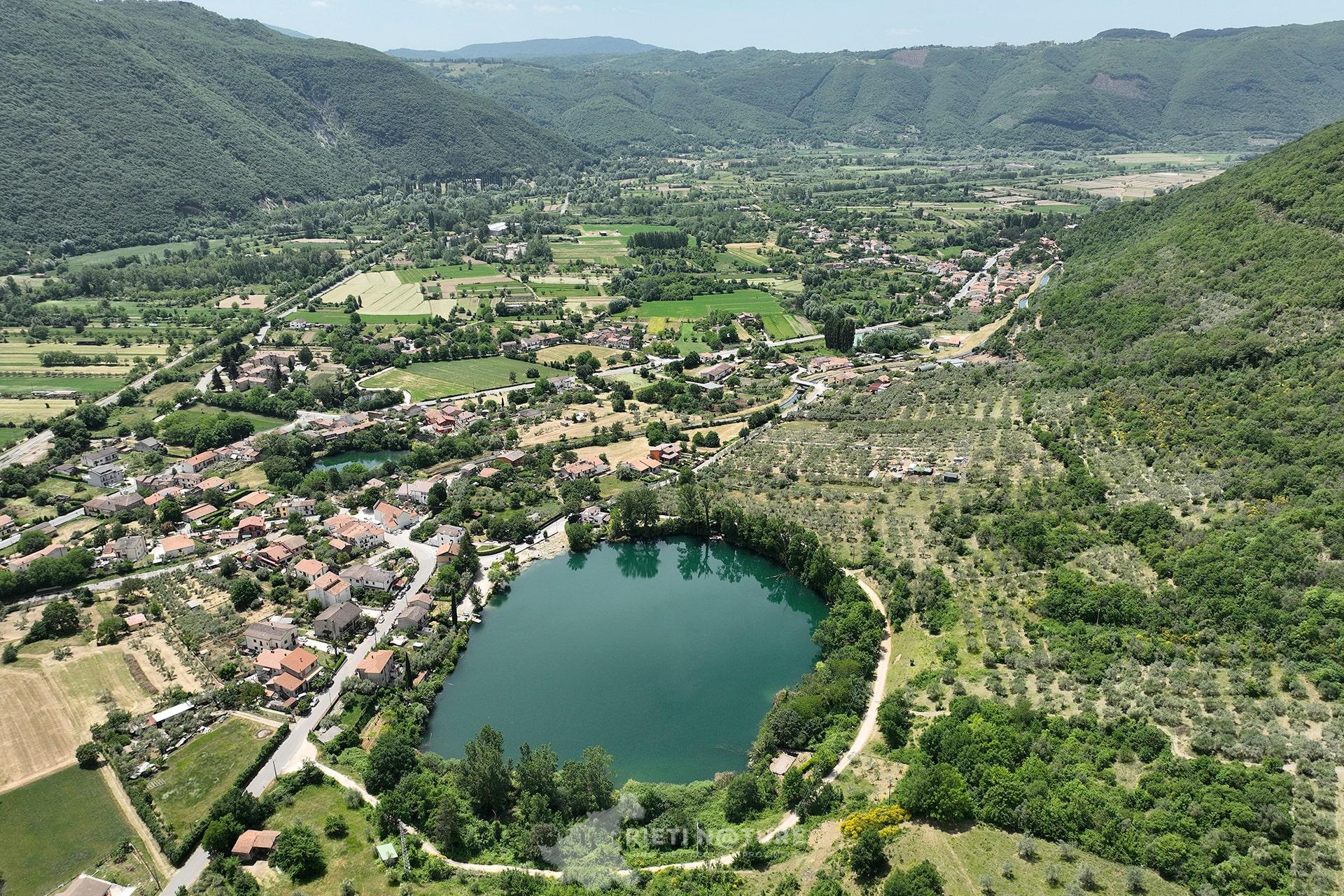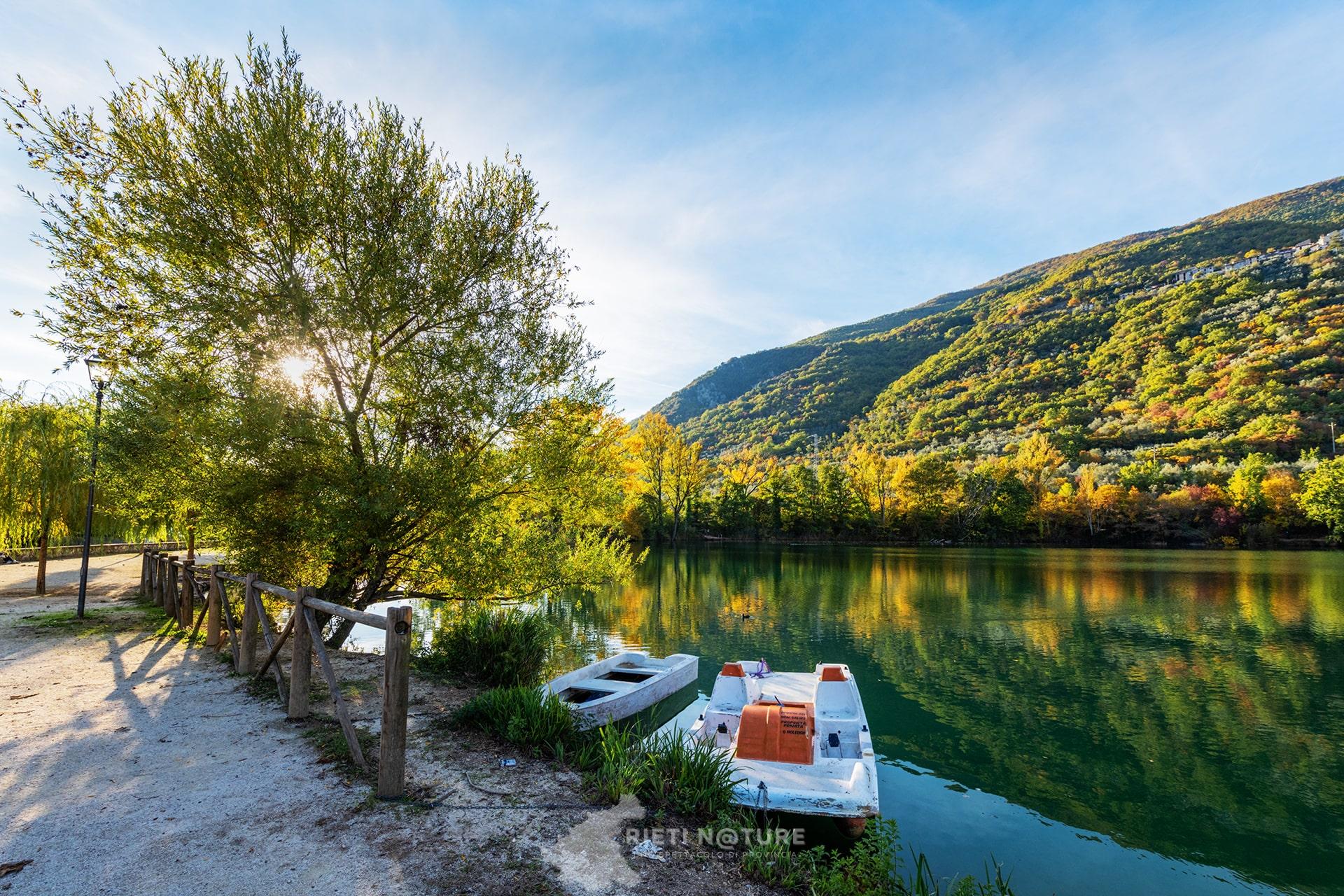
Castel Sant’Angelo
From the villa of Tito to the thermal baths of Cotilia to the festival of the springs, Castel Sant'Angelo is a town that will thrill those who want a relaxing visit and those who want to learn something new.
Population
1.296
Area
31,3 km²
Altitude
448 m
Where is it?
15 km from Rieti, with an altitude ranging from 404 meters a.s.l. to 1586 meters above sea level, the town of Castel Sant'Angelo is located on the old Via del Sale (Salt Route). The municipal territory extends for 30 km2, dominating the entire surrounding Velino valley, where numerous archaeological sites are surrounded by uncontaminated nature.
What to see?
Castel Sant'Angelo features several monuments and sites of significant religious and archaeological importance. Firstly, the remains of the castle are still visible on the highest part of the city: the high keep, open on one side only by a door and a window, the walls with heavily splayed loopholes and gun ports. Part of a corner tower and one of the edges of the wall are preserved. The territory conserves some sections of the ancient salt road. One of the best-preserved stretches is visible in an artificial lake dedicated to sport fishing. There are also the ruins of the so-called Peschio del Principe, which must have been a fortified structure used to control the valley below in the epoch of its splendor. Furthermore, of great archaeological value is the Villa di Tito above the picturesque lake of Paterno. It can see the remains of an imposing structure, commonly known as Terme di Tito. At first glance, this structure might appear to be the rest of some Roman aqueduct but without arches. Over time the remains were identified with several ruins: the ancient Cutilia (city of pre-Roman origin), The Villa of Tito, and the Baths of Tito, the latter due to the channels present in the walls. The nature of the building is not clear, even if it seems possible to hypothesize that the structures were pertinent to an imposing rustic villa with an adjoining thermal plant. Certainly, a Villa of this size and significance could only belong to a member of a prestigious family, probably the Flavians. There are three religious’ monuments of particular importance in the municipal area: first and foremost, the church of St. Maria Della Porta (dedicated to Saint Mary), which is the ancient parish of the town, located in the medieval village. It stands close to the antique main gate. From the outside, it looks like a classic medieval building. Inside, it is structured with three naves divided by arches frescoed with starry sky, and on the sidewalls, there are four altars. The church houses the precious relics of Saint Blaise, the patron saint of the parish and the town. Of particular importance is the church of St. Blaise, which formerly served as the cemetery church. The main feature of this church is the elegant portal dating back to 1564; in the tympanum, God the Father's blessing between two cherubs is represented, while in the pendentives of the arch, the Annunciation is depicted. Consecrated in 1879, St. Blaise has a Romanesque architecture with a central nave and two aisles with six altars dedicated to the saints venerated in the town. Finally, the church of Saint John the Baptist is in the square of Paterno: it has the engraving “TEMPLUM DIVI IOANNIS MDLVIII”, placed on the architrave of the portal. Inside the church are preserved works of art, including sixteenth-century frescoes, such as the Our Lady of the Rosary.
















